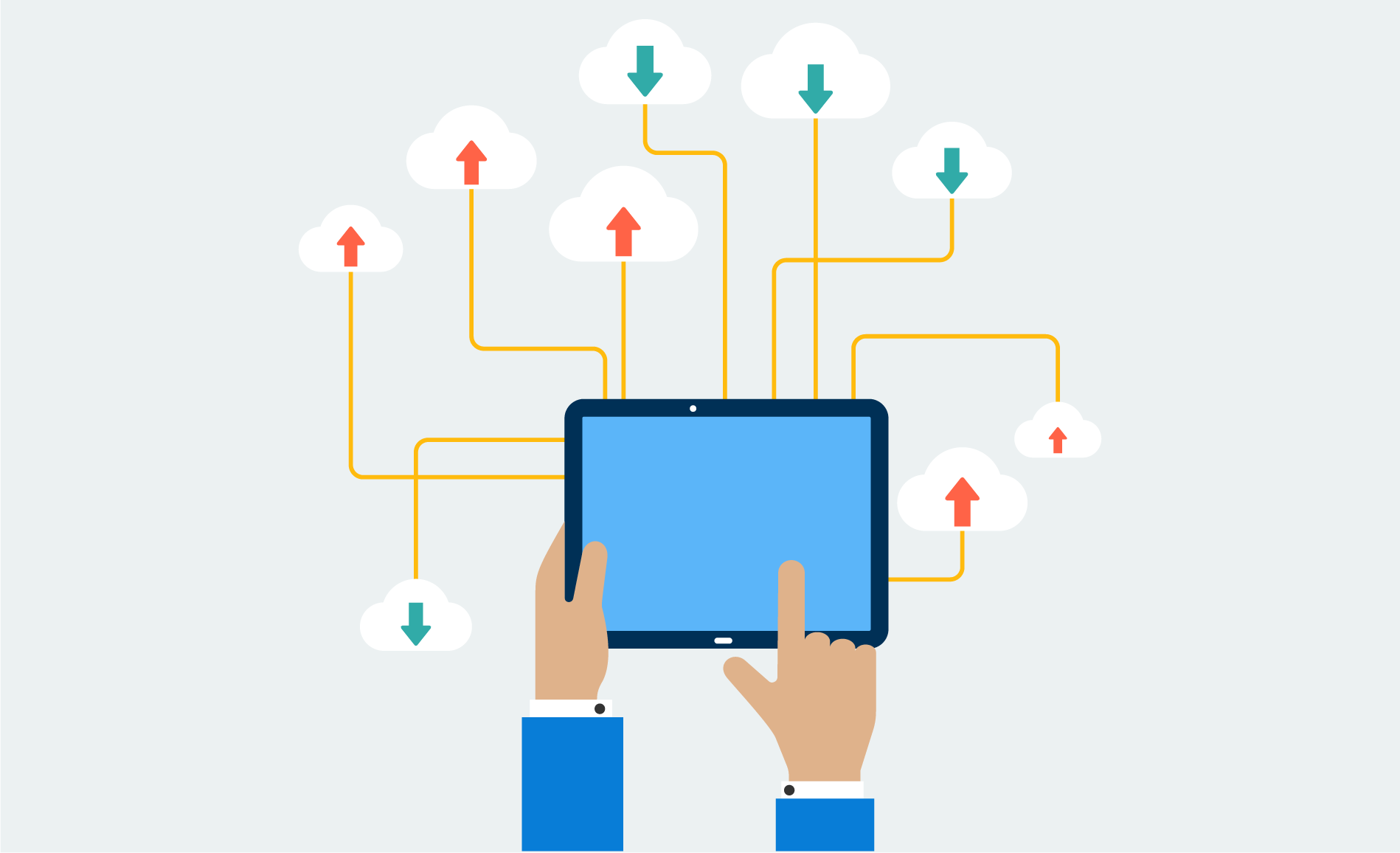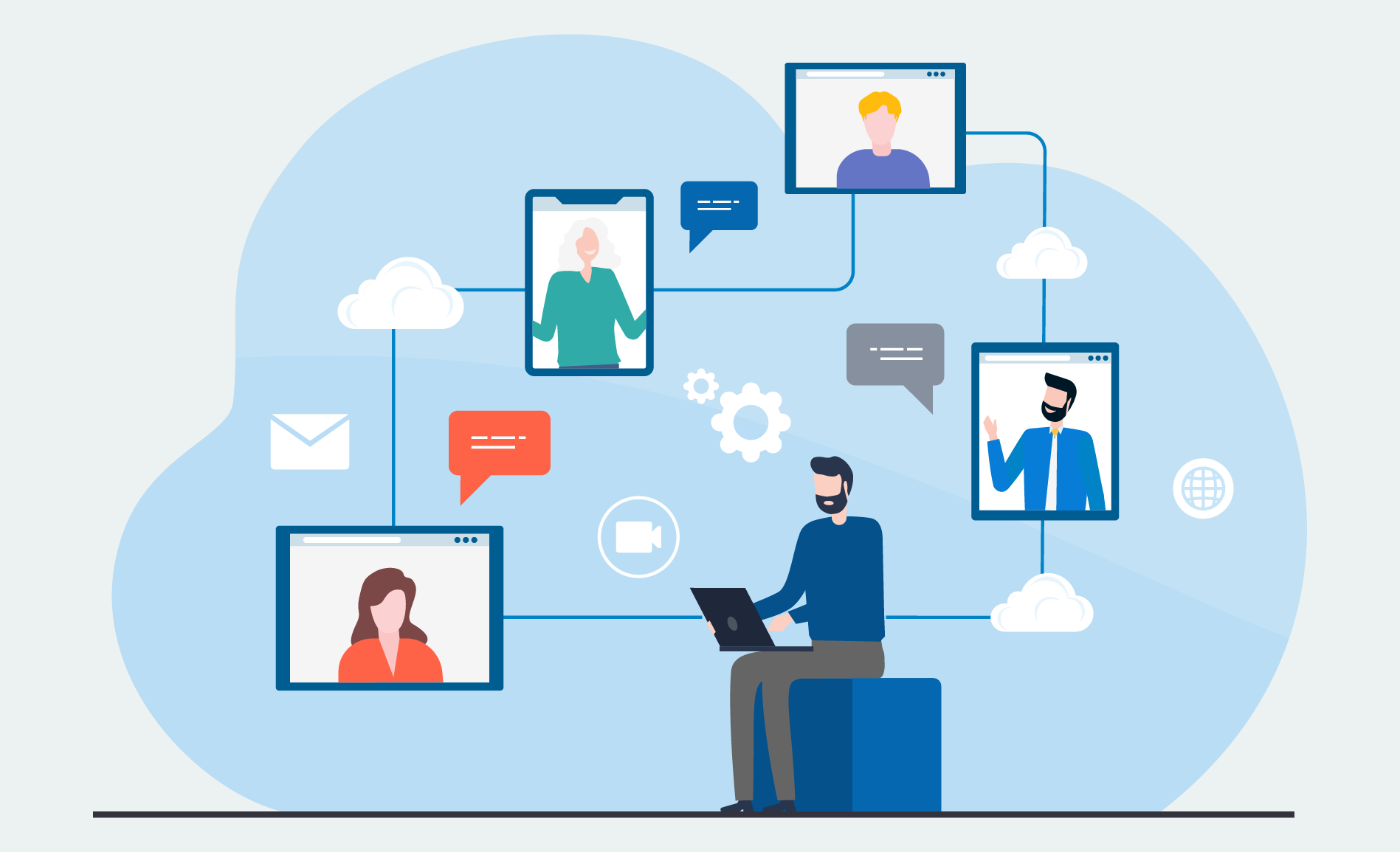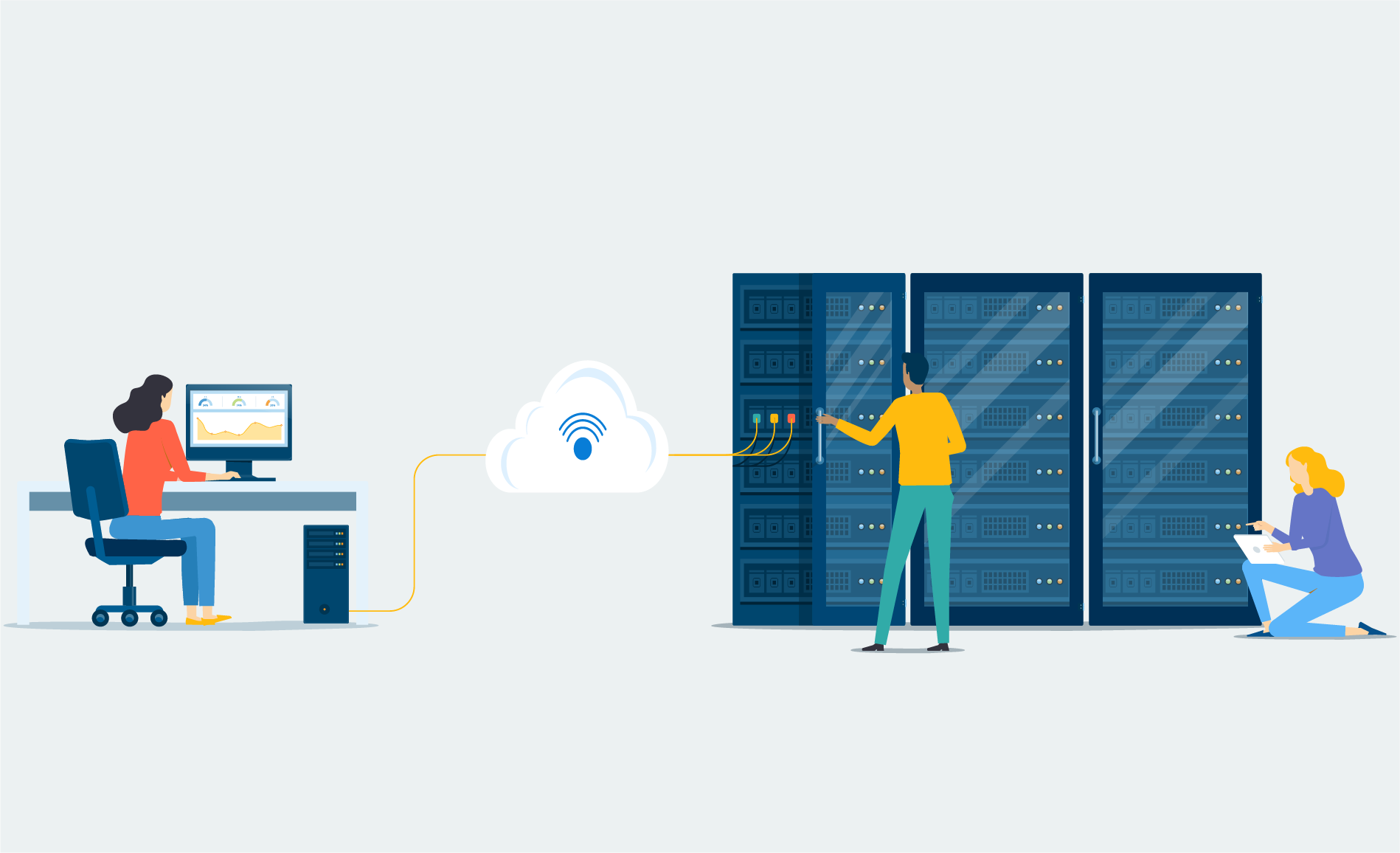The buying process has seen a drastic change in recent years. The rise in technology has brought buying opportunities to our fingertips through the smartphones in our pockets – all we need is an internet connection.
Of course, the fundamentals of the buying process have, essentially, stayed the same: your customers still have to recognize that they have a specific need, they still need to collect information and do their research, and they still need to determine if your competitors offer a better alternative before they purchase your product. But, with so much technology available to them, this buying process is happening at a substantially accelerated rate.
In this blog, we’ll talk about three things that you need to know about the new buying process, including the importance of data and reviews, the science behind the buying process, and how your SMB can take advantage of technology to get ahead.
1. Understanding the New Buying Process and the Importance of Data & Reviews
The buying process is the journey that your customer goes through – from understanding they have a want or need to researching what’s available, to purchasing something that helps, to post-purchase behaviours. Understanding your customer’s buying process is not only important for your salespeople, it will also enable you to align your organization’s overall marketing and sales effort.
Engel, Blackwell, and Kollat’s 1968 book on consumer behaviour set the standard for defining the buying process and helping marketing teams to better target those potential customers in various stages of their buying journey.
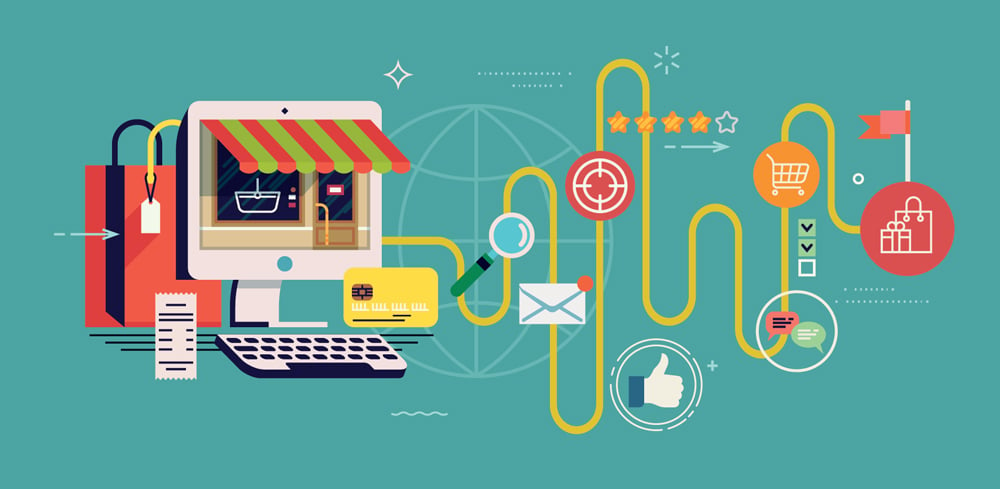
Today’s New Buying Process
But today's buying process is different because of the sheer number of streams that are directing specialized information to us every single day. Consider how much is out there: social media, television, radio, billboards, in-app ads – everywhere we look, we’re being bombarded with information and marketing from thousands of companies. And if you’re being bombarded, so are your potential customers.
There’s one thing that has remained constant from 1968 to now – there is still a vital need to understand the new buying process to come up with an overall marketing and sales strategy. Two stages of the buying process, in particular, have become much easier with the introduction of technology, social media, and apps into the mix – the “Information/Research” stage, and the “Alternative Education” stage. This is where reviews come in: reviews are playing a huge role in the buying process, which is both a blessing and a curse. In the next section, we’ll explore why.
The Role that Reviews Play in the Buying Process
Let’s take a look at the following statistics:
- The majority of customers will read up to seven reviews before forming an opinion of a business.
- 93% of consumers say online reviews do impact their purchasing decisions.
- A product with at least five reviews has a 270% higher likelihood of purchase than a product with zero reviews.
It’s clear by these statistics that online reviews are important to your small business’s success. If you’re selling a product or a service and you don’t have online reviews, you might be seriously missing out on business opportunities. But online reviews are also becoming a major catch-22: you need reviews to be successful, but potential customers are also getting lost in reviewing your reviews!
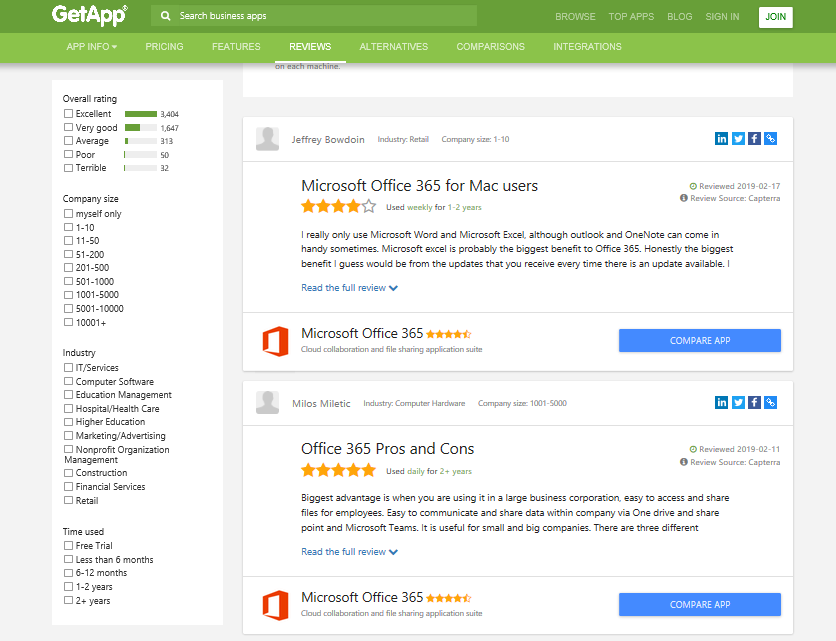
Think of how much time goes into reviewing those 7 or more reviews before they purchase your product or service. With that much screen time, it’s no wonder that “analysis paralysis” sets in, and, rather than actually going to purchase the product or service, they keep researching reviews instead. Or, as part of the overall buying process, this reviewing stage could actually lead to a new need being discovered. For instance, a customer who’s decided to purchase your brand of tires might decide they need a new car instead. This would lead to a delay in the buying process while they search for new information and new reviews on cars, as opposed to tires.
One way that you can break this “analysis paralysis” is to provide the ability for them to review several comparable products or services right on your page. For instance, consider Geico, the insurance provider, who allows potential customers to compare their rates with those of other insurance providers, even if it shows a cheaper price than theirs. This serves Geico well, though, because it helps to establish a trusting customer relationship for being upfront and honest.
2. The Science Behind Reviewing the New Buying Process Internally
You know your customer buying process better than anyone. So, take the time to map it out. Generally, the new buying process involves 5 phases – recognition, education, comparison, solutioning and selection. Your buyer is searching for key pieces of information to help them move along the buying process and fulfill that need that they have. Keep in mind, they are as eager as you are to find a solution to their problem. Now, let’s map out how we can help them in this journey:
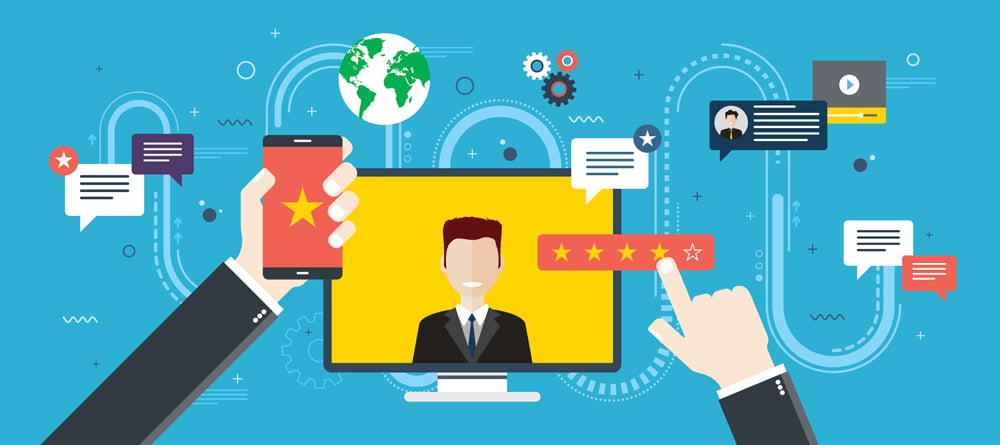
Consider your interactions with the customer during each phase of the buying process.
Is the customer doing a simple Google search? Or, are they using your YouTube channel to look at product reviews or listening to a webinar you’ve put together to become better educated on the product or service you’re offering? Each of these shows the stage that they’re currently in – a Google search typically means they’re at the beginning of the “education” stage, whereas listening to webinars might be closer to the “solutioning” phase. Either way, what is your call to action for that potential customer? Have you determined how they’ll reach out to your sales reps to get more information? Do you have a plan to make it easy for them to compare you to your competition? Friendly, helpful, and non-intrusive interactions with the customer during each phase of the buying process will help you to build a rapport with them and develop that relationship that will sway them in your favour when making their final decision.
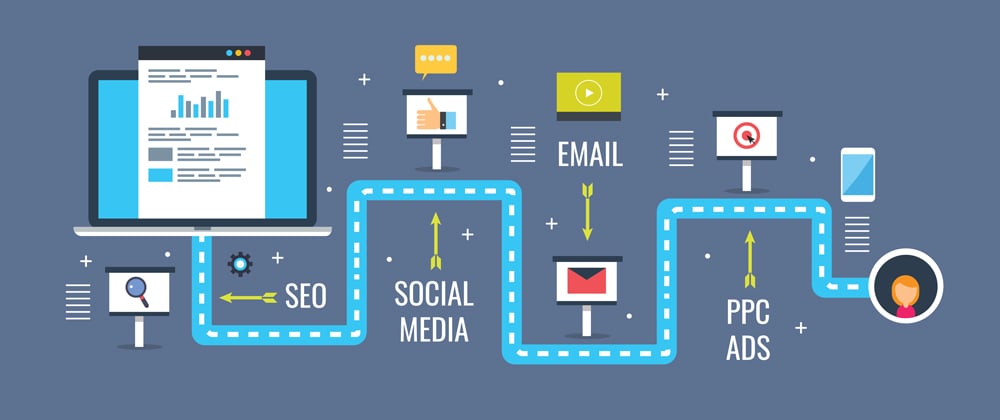
Consider the content you’re providing to your customers, how they’re getting it, and when they’re getting it.
Are your potential customers searching through analyst reports to get the information on how to book a demo of your product? Do they need to scroll through your website to find a “contact” button? How long do you wait to contact them after they download one of your whitepapers? Are you sending emails that ask for a conference call on a specific date at a specific time because they liked one of your organization’s tweets? Considering what content you’re providing, and when you’re providing it is vitally important to the buying journey. You don’t want to be asking for the close when your potential customer is just starting their search. Knowing what to give your customers at exactly the right stage of their buying journey is a science.
Consider who you’re engaging with and what authority they have.
Determine who you are engaging with and what authority they have in the buying journey. Is the person who is downloading your whitepaper the decision-maker or someone on their staff who’s been tasked with gathering information about various options? What is the title of that person who’s signed up for your webinar? It’s important to remember that some of the people who are reviewing your content are information gatherers, and not the decision-makers. If so, you might want to give them the content they need to help them facilitate a faster and more informed decision. After all, if you make them look good to their superiors, there’s a far greater chance of them recommending your product or services to help them fill that need.
If it helps, you can map out your Buyers Journey on a worksheet – we recommend something like this:
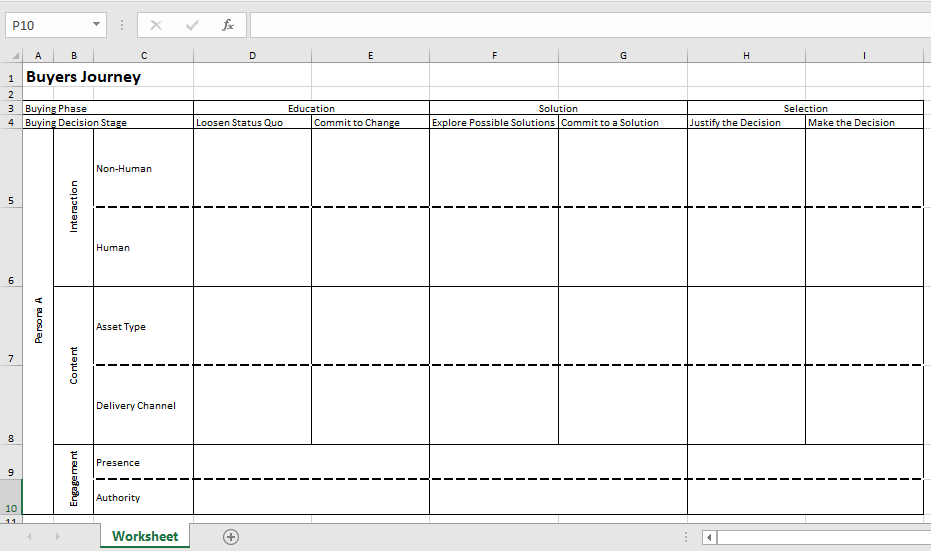
3. Utilizing Technology to Predict the Customer Buying Process
There is absolutely no question in our minds that technology has the capability to take the guess-work out of the customer buying process. With advancements in mobile technology especially, technology is changing the way that we purchase not only products, but services too. We not only determine what restaurants we want to eat at, but we can make a reservation right from our phone. Our Amazon app will help us place orders for everything from diapers to drones. Spotify takes our musical preferences and provides suggested playlists that they think we’ll want to listen to. Almost anything we want is now at our fingertips – thanks to the smartphones in our pockets.
Predictive technology, therefore, will become a key tool that every marketing team for every SMB will want to have. Utilizing predictive analytics, like you find in Microsoft’s Power BI or Dynamics 365 for Sales, can help you to better understand what your customers are likely to do based on key data such as previous purchase habits, social media interactions, online behaviours, or demographic information.
Power BI: Data Analytics You Can Trust
With a data analytics tool, like Power BI, you can create custom reports and dashboards that allow you to track sentiments, which will track tweets, Facebook posts, blogs, articles, and more, and will show you how your potential customer base views your organization as a whole.
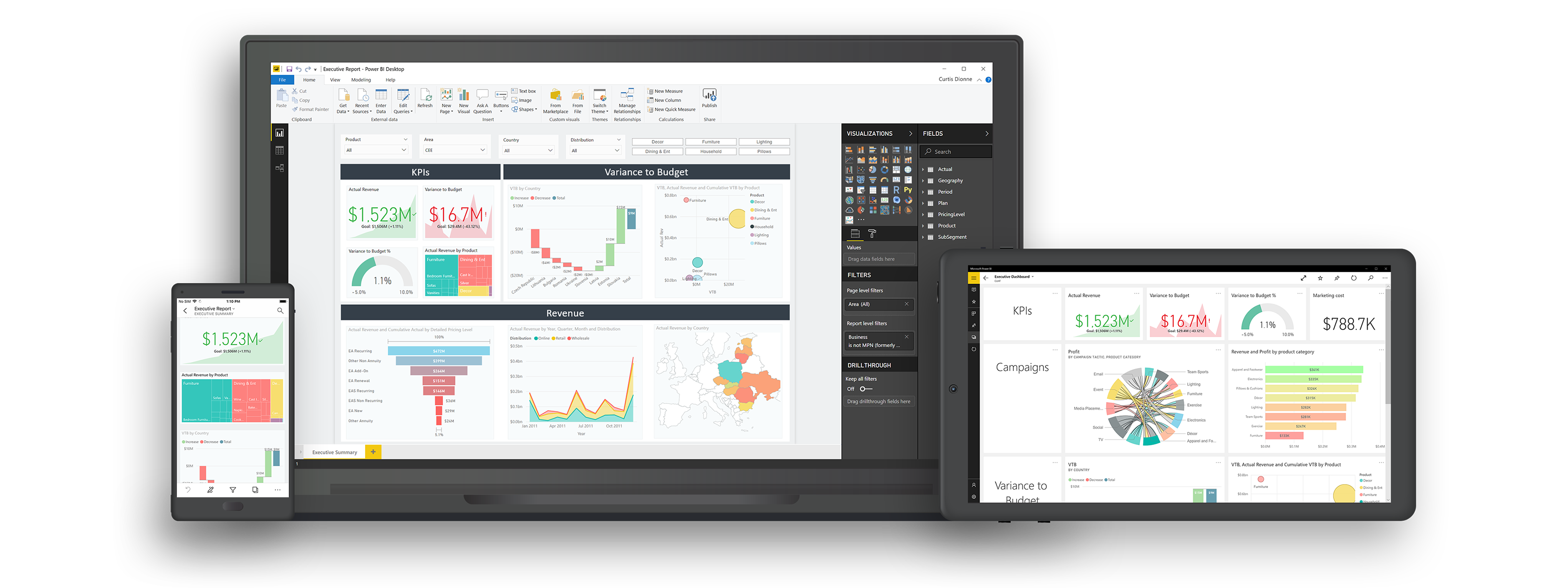
Interested in learning more about Power BI? Check out this short video below, or reach out to our experts and we’ll help answer your questions.
This blog post is co-authored by ProServeIT and Change Connect. We publish a monthly blog specifically written for small businesses. Some of the topics we have discussed include security, CRM, Cloud computing, Business Intelligence (BI), Data Security, Training, Artificial Intelligence, Internal Communications, and Internet of Things Technology.
About ProServeIT
As a multi-award-winning Microsoft Gold Partner, ProServeIT has been helping SMBs increase efficiency for over fifteen years. We’re constantly looking for ways to help our customers get the most out of their technology investments, and we love to introduce our small business clients to new tools that can help them be more productive. Interested in implementing Microsoft Power BI or Dynamics 365 in your organization? Talk to us to arrange a complimentary demonstration of these great tools, or chat about other options that might be right for you!
About Change Connect
Change Connect specializes in helping clients to work more efficiently and effectively in pursuit of their revenue goals. We offer customized solutions for small to midsized businesses with a focus on Sales Transformation, which includes implementing strategic Sales and Marketing plans. Whatever stage your business is at, whether you’re a start-up looking to expand or an established company looking to move from a plateau to record growth, Change Connect is your partner in transformation. Change Connect – Making Sales Scalable.
